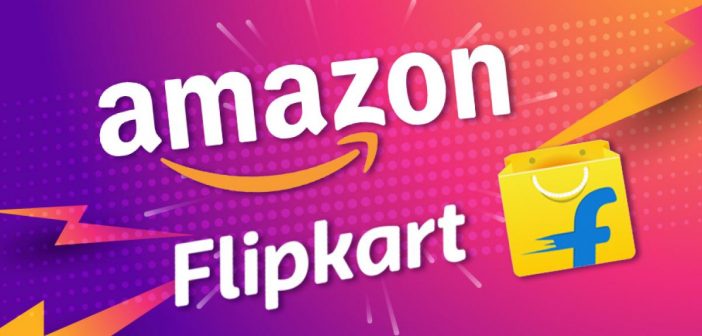India’s annual festival sales are a major event for e-commerce giants, with Amazon India and Flipkart leading the charge. These sales typically coincide with major festivals such as Diwali, Navratri, and Eid, and serve as a critical period for both companies to boost their sales volumes and customer engagement.
2. Expected Sales Volume
Amazon India:
- Historical Performance: In 2023, Amazon India’s Great Indian Festival generated sales worth approximately ₹55,000 crore ($6.5 billion) during its sale period.
- Projections for 2024: Analysts predict a 15-20% growth in sales, which would push the total to around ₹63,000 – ₹66,000 crore ($7.5 – $8 billion). This estimate is based on trends in consumer behavior, increased smartphone penetration, and higher average order values.
Flipkart:
- Historical Performance: Flipkart’s Big Billion Days in 2023 brought in sales of about ₹50,000 crore ($6 billion).
- Projections for 2024: Flipkart is expected to see a similar growth trajectory of 15-20%, potentially reaching ₹57,500 – ₹60,000 crore ($7 – $7.5 billion). This growth is attributed to enhanced marketing strategies and expanded product categories.
3. Benefits to Consumers
- Discounts and Offers: Both Amazon and Flipkart are expected to offer significant discounts, ranging from 30% to 70% on a wide range of products, including electronics, fashion, and home goods.
- Enhanced Shopping Experience: Advances in technology such as AI-driven recommendations, personalized offers, and faster delivery services are expected to enhance the shopping experience.
- Exclusive Deals: Exclusive launches and early access deals for premium members will be a key feature, providing additional savings and benefits to loyal customers.
4. Economic Impact
Contribution to GDP:
- Sales Revenue: The estimated ₹120,000 crore ($14 billion) combined sales for Amazon and Flipkart could significantly contribute to India’s GDP, with a positive impact on retail and ancillary sectors.
- Employment Generation: The festival sales drive job creation in various sectors, including logistics, customer service, and warehousing, potentially providing temporary and permanent employment opportunities.
Consumer Spending Trends:
- Increased Consumer Spending: Festival sales often lead to a spike in consumer spending, boosting demand for consumer goods and services.
- Investment in Infrastructure: Both companies are investing in infrastructure, such as warehouses and delivery networks, which will have long-term benefits for the Indian logistics sector.
Technological Advancements:
- Innovation: The competitive nature of these sales drives technological advancements in e-commerce, leading to better services and products for consumers.
- Data Utilization: Enhanced data analytics during these sales periods helps companies understand consumer preferences, leading to improved product offerings and targeted marketing strategies.
5. Competitive Strategies
- Amazon India: Likely to focus on deep discounts, exclusive brand partnerships, and expanded product lines. Investment in AI and machine learning will play a role in optimizing the shopping experience.
- Flipkart: Expected to leverage its extensive network of local sellers, aggressive discounting, and innovative financing options like ‘No Cost EMI’ to attract price-sensitive customers.
Conclusion
The anticipated festival sales by Amazon India and Flipkart in 2024 are set to be significant, with substantial benefits for both consumers and the Indian economy. With projected sales figures reaching around ₹120,000 crore ($14 billion), these events will not only boost consumer spending and enhance shopping experiences but also contribute to economic growth and technological advancements in India.




